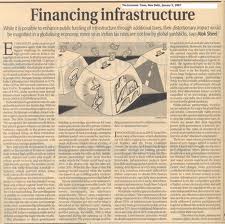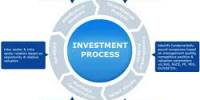The newly elected government of Bangladesh has identified the development of infrastructure as one of its first and foremost objectives. This is an important area of the economy where investments have historically remained below potential because both local and foreign investors had been constrained by various types of inefficiencies, including, high levels of corruption.
We hope that fresh initiatives taken by the current regime, executed with single-minded devotion and a clear destination model, will once and for all, cure this past malady. Only by achieving this can we stay on track to be a middle income economy by 2021. The current global financial crisis makes it even more crucial that we get our infrastructure strategy right from the “get set go” just to survive. There is no room for further error.
Infrastructure development has many components, including, but not limited to, the development of the following, to name the most obvious items:
- Adequate power supply on a national scale
- National roads and highways
- International standard bridges
- Port capacity and increased efficiency
While we all know what needs to be done, there is not much progress to date.
What went wrong?
The impediments to infrastructure development have been many, but it can be summarised in the following simple terms:
- Political whims
- Lack of committed leadership
- Corruption
- Access to finance
- Capacity
While we can only speculate that lessons learnt from the last two years have taught us better than to once again succumb to the top 3 items on the list, the last item is just as crucial in ensuring seamless execution.
Access to financing:
Infrastructure financing will require billions of dollars. Structuring financing will need commitment from 3 main stakeholders the private sector, the public sector and the international development partners. The focus should be to encourage public-private partnership, both local and foreign; ensure that the right economic and monetary incentives are created for all parties, so that they remain committed and engaged. In this regards, it is crucial to engage experienced professional teams in the early planning stages of the financing structure. The business community will be supportive of any initiative to resolve the infrastructure crisis.
Financing Considerations:
There are various factors that are taken into account by financiers. Size is an important determinant in attracting foreign lenders/investors. Banks and investors will be looking to participate in larger transactions in order to justify the time and effort required for due diligence and other tasks.
Off-taker is an important factor. A project may have strategic and economic importance but financiers may not be comfortable with the off-taker and remedies if the off-taker fails to meet its obligations. Lenders will prefer to see long term supply agreements for the tenor of the debt from credit-worthy suppliers and may require hedging to reduce/eliminate price risk.
Transmission and distribution capacity is an important element to be taken into consideration, as financiers view this as a project-on-project risk. However, Bangladesh seems to have made some progress on the distribution front already.
Sponsor and construction contracts are vital as well. Strong sponsors with successful track record can mitigate a number of the risks, particularly completion risks, if they provide such guarantee. The experience and cost advantage of EPC firms in the related industry, the country and with specific assets is important, as financiers will carefully analyse these aspects too. Financiers will look at the track record of the government in terms of interference in the power sector, pricing and fuel costs pass through and enforceability of contracts.
Most of these risks can be mitigated by multilateral or export credit agency’s involvements. It is noteworthy that the existing Independent Power Plants (IPP) in Bangladesh passed the tough screening of investors and lenders and are operating successfully. This should work as an instance for successive implementation of future projects.
Financiers
-Government and international agencies have put the power sector high in their development agenda. Although public sector institutions currently dominate the generation and distribution of electricity, more private initiatives in the form of IPP and Small Power Plants (SPP) are catching up.
Power system development plans till 2020 have been put in place by the government. Development organisations, such as the World Bank and Asian Development Bank, are very keen to work with the government on power sector reform and make the Bangladesh Energy Regulatory Commission (BERC) fully operational.
The Private Power Generation Policy of Bangladesh provides a number of fiscal incentives for foreign investment in the power sector. Bangladesh has developed a robust IPP model during the ’96 regime, which has been proven successful.
-Bi-lateral and Multi-lateral Development Agencies. There are several bi-lateral and multi-lateral development agencies that have been focusing on infrastructure development finance in Bangladesh. Among the successful IPPs, Meghnaghat Power was supported by Asian Development Bank (ADB) and the Infrastructure Development Company Limited (IDCOL), Haripur Power by FMO (the Dutch Government Agency), NEPC by Overseas Private Investment Corporation of the United States (OPIC), and Khulna Power Company Limited by International Finance Corporation of the World Bank (IFC). Additionally, IFC, ADB, NORFUND, DEG and EIB have played key roles in financing infrastructure – power, telecom and largest manufacturing setups in Bangladesh. ADB and IFC have both expressed an increased willingness to provide equity for power projects. We have also seen interest among export credit agencies like ECGD of UK, Coface of France, Hermes of Germany, equally interested to work with their home country corporations, for implementing projects in Bangladesh.
-Private equity firms also invest in infrastructure development. Power sector in Asia continues to be a target for global and regional investors. However equity investors are generally motivated by the GDP growth prospects, government stability, transparency of pricing regime, and credit quality of major off-taker.
-Islamic Financing. In the present global financial scenario, Bangladesh should also look to Middle East and Asia to tap the Islamic liquidity pool for financing power/ infrastructure projects.
-Local capital markets can also channel domestic liquidity to an extent if the transaction is structured properly.
Bangladesh needs to act as a participant in the global economic and financial network for implementation of infrastructure projects. We should lower our dependence on the donors or they can be brought in where economic returns are higher than commercial returns (such as river training, land acquisition, land administration, resettlement) and commercial financiers may finance commercially viable activities. Donor agencies or development partners can also focus on capacity building among civil bureaucracy, for improving their understanding about the project economics and execution with precision. In a country like Bangladesh, where there is an acute shortage of power and other infrastructural facilities, ensuring transparency, execution support capability and corporate governance can do miracles in terms of bringing back investors focus and successful implementation of projects.
The writer is a banker and economic analyst. He can be reached at:mamun1960@gmail.com.
















